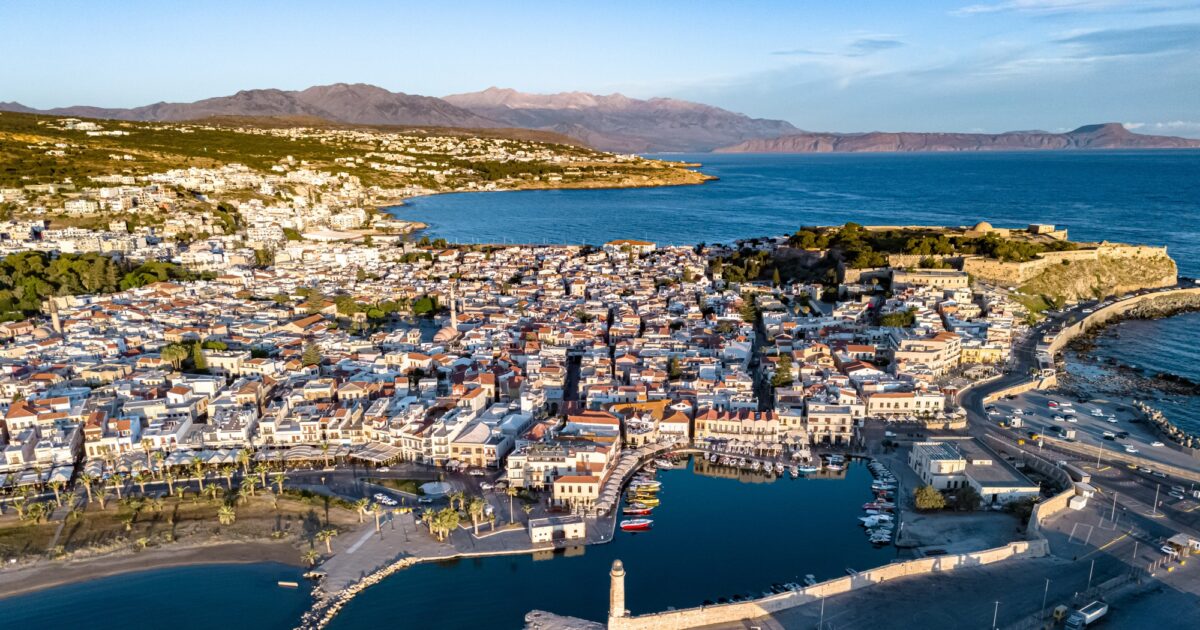OR Crete remains the “heavy paper” of the Greek market real estate and tourism, attracting funds, companies and visitors despite international financial challenges.
With strong economic indicators, stable consumer demand and constant investment mobility, Crete is forming a complex landscape of growth extending from home and commercial real estate to the hospitality industry.
The Greek economy is growing at a rate of 2.3% in 2025, exceeding the average of the eurozone, and in Crete employment is mainly supported by construction, trade and professional services, with unemployment gradually divergent. Consumption and investment, coupled with durable tourist traffic, support the local economy and create stable ground for the real estate market.
The office market according to Danos Real Estate’s analysis, which records the first semester data of the year and the prospects by the end of the year, is evolving dynamically, with the demand being powered by both local businesses and new corporate arrivals.
Heraklion and Chania attract the greatest interest, while Rethymnon has room for growth. Telecommunications and e -commerce are leading demand, but upgrading the existing stock to a functional, sustainable and technologically modern level remains a challenge. Performances range from 6% to 6.5% for Class A buildings in prime locations and reach 8.5% for secondary areas, while vacant spaces remain constant.
In retailing, Crete benefits from continuous tourist flow and strong local consumption.
In Chaniathe Venetian port and the surrounding roads, such as Halidon and Hatzimichalis Giannari, record rents from 35 to 45 euros the square, while In Heraklion Top commercial zones, such as Daedalu, 1866 and Lion Square, range from from 50 to 70 euros.
In Rethymnon Demand focuses on the old town and the northern part of Arcadi, with prices from 15 to 30 euroswhile In Lasithi Central zones arrive up to 15 euros. High street sites are stable, showing complete consumption and investment confidence recovery.
Crete’s strategic position also reinforces its role as a secondary logistics hub, with interest focusing around urban centers and near ports and airports. Growth is fueled by e -commerce rise, agri -food exports and the need for distribution networks that support tourism. However, shortages in modern facilities and local weaknesses are currently limiting scale capabilities.
The housing market remains in high demandespecially for luxurious real estate in seaside and tourist areas. In Heraklion prices range from 2,000 to 4,900 euros per square, with an average of 3,450 euros, while in Chania they reach up to 6,000 euros, with the newly built around 4,000 euros. The limited offer of long -term leases, due to the extensive use of real estate in short -term lease, pushes rents upwards.
Tourism in 2025 is expected to break record, with arrivals in Heraklion increased by 13% and total summer bookings at +31% compared to last year. New hotel arrivals, such as JW Marriott in Marathi, Chania, the Luxury Beach Resort in Rethymnon and Hilton Garden Inn in Chania, enhance the image of upgrading the tourism product and adapting to viable and thematic tourism trends.
The season is expanding, quality goes up, but challenges remain at the level of workforce and environmental capacity.
Crete in 2025 proves to be a miniature of Greek economic resilience as it has a strong tourist activity, a strong housing and commercial real estate market, a popistics emerging sector and prospects for further development. The key issue is to overcome infrastructure weaknesses and to make the most of the European resources directed to the region.
